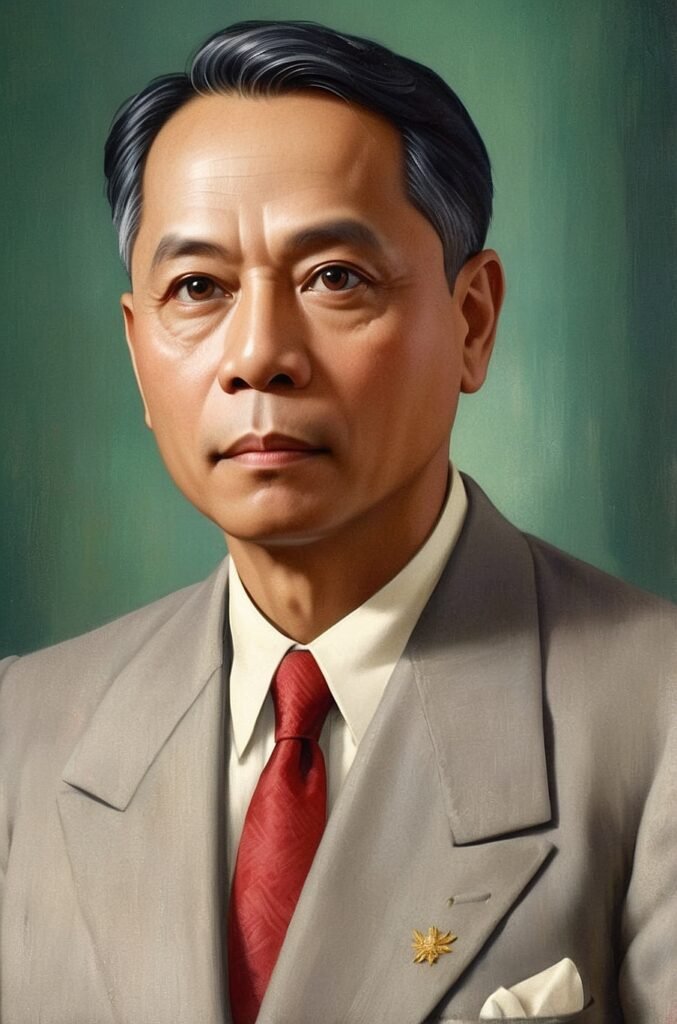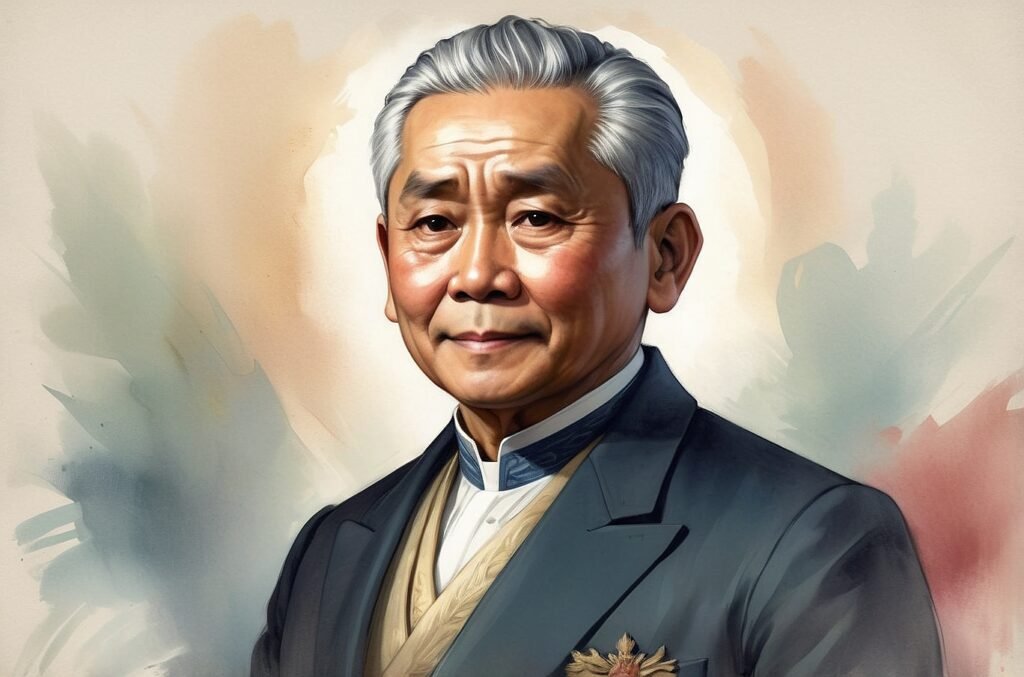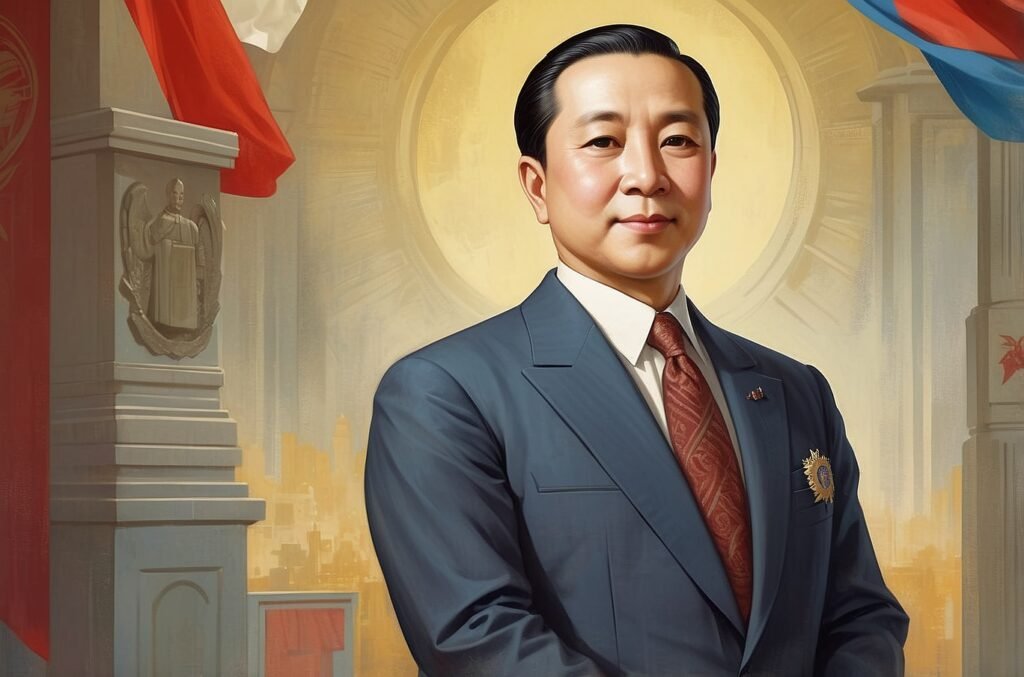Manuel Roxas holds a distinguished place in Philippine history as the first President of the Third Republic. His presidency, though brief, marked a crucial period in the nation’s transition from colonial rule to independence. This blog post delves into the life, political career, and lasting impact of Manuel Roxas, exploring his role in shaping the early years of Philippine independence and his contributions to the country’s political landscape.
Early Life and Education
Birth and Family Background
Manuel Acuña Roxas was born on January 1, 1892, in Capiz (now Roxas City), on the island of Panay in the Philippines. He came from a prominent family with a history of political involvement. His father, Gerardo Roxas, was a former lieutenant governor of Capiz, while his mother, Rosario Acuña, was from a well-respected local family. Unfortunately, Manuel’s father passed away when he was only seven years old, leaving his mother to raise him and his siblings.
Educational Journey
Roxas displayed exceptional intelligence from an early age. He received his primary education in Capiz and later moved to Manila for his secondary education at Manila High School. His academic prowess earned him a scholarship to study law at the University of the Philippines. During his time at the university, Roxas excelled in his studies and demonstrated leadership skills that would serve him well in his future political career.
In 1913, Roxas graduated from the University of the Philippines College of Law with honors. He placed first in the bar examinations that same year, showcasing his exceptional legal acumen. This achievement set the stage for his rapid rise in both the legal profession and the political arena.
Early Political Career
Entry into Politics
Roxas’s political career began shortly after his success in the bar examinations. In 1917, at the young age of 25, he was elected to the municipal council of Capiz. This early foray into local politics provided him with valuable experience and a platform to showcase his leadership abilities.
Rise through the Ranks
Roxas’s political ascent was swift and impressive. Here’s a timeline of his early political career:
| Year | Position |
|---|---|
| 1919 | Elected to the Philippine House of Representatives |
| 1922 | Appointed as Speaker of the House |
| 1934 | Elected as a delegate to the Constitutional Convention |
| 1938 | Appointed as Secretary of Finance |
| 1941 | Elected to the Philippine Senate |
During his time in these various positions, Roxas played a crucial role in shaping Philippine policy and governance. He was known for his oratorical skills, sharp intellect, and ability to navigate complex political situations. His experience in finance and law made him a valuable asset in crafting legislation and managing the country’s economic affairs.
World War II and Japanese Occupation
Role during the Japanese Occupation
The outbreak of World War II and the subsequent Japanese occupation of the Philippines presented significant challenges for Filipino leaders, including Roxas. During this period, Roxas served in the pro-Japanese government of José P. Laurel. However, his true allegiance remained with the Allied forces and the Philippine resistance movement.
Covert Resistance Activities
While ostensibly cooperating with the Japanese occupiers, Roxas secretly maintained contact with the Filipino and American guerrilla forces. He provided valuable intelligence to the Allied forces, helping to undermine the Japanese occupation from within. This dangerous double role put Roxas at great personal risk but demonstrated his commitment to Philippine independence and his strategic acumen.
Arrest and Escape
In 1944, as the tide of the war turned against Japan, Roxas’s covert activities came under suspicion. He was arrested by the Japanese military police and faced possible execution. However, he managed to escape with the help of Filipino guerrillas and eventually linked up with American forces that had begun the liberation of the Philippines.
Post-War Leadership and Road to Presidency
Key Political Positions
Following the liberation of the Philippines, Roxas quickly reemerged as a key political figure. His wartime activities and escape had enhanced his reputation, and he was seen as a hero by many Filipinos. In the immediate post-war period, Roxas held several important positions:
- President of the Senate (1945-1946)
- Head of the Liberal wing of the Nacionalista Party
- Leader of the Philippine delegation to the United States to negotiate independence
Campaign for Presidency
As the Philippines prepared for independence, Roxas positioned himself as a candidate for the presidency. His campaign focused on several key issues:
- Rapid post-war reconstruction
- Strengthening ties with the United States
- Economic development and industrialization
- Fighting the growing communist insurgency
Roxas faced off against Sergio Osmeña in the 1946 presidential election. The campaign was intense and closely watched, as it would determine the first leader of the independent Philippines.
Election Results
The presidential election was held on April 23, 1946. The results were as follows:
| Candidate | Party | Votes | Percentage |
|---|---|---|---|
| Manuel Roxas | Liberal | 1,333,092 | 54.94% |
| Sergio Osmeña | Nacionalista | 1,093,995 | 45.06% |
Roxas emerged victorious, securing a mandate to lead the Philippines into its new era of independence.
Presidency and Key Policies
Inauguration and Independence Day
Manuel Roxas was inaugurated as the last president of the Commonwealth of the Philippines on May 28, 1946. Just over a month later, on July 4, 1946, he became the first president of the independent Republic of the Philippines. This historic moment marked the culmination of decades of struggle for Philippine independence and set the stage for Roxas’s presidency.
Economic Policies
Roxas’s presidency focused heavily on economic recovery and development. Some of his key economic policies included:
- Rehabilitation Act of 1946: This act allocated funds for the reconstruction of war-damaged infrastructure and industries.
- Bell Trade Act: This controversial agreement with the United States granted preferential trade status to American businesses in the Philippines in exchange for rehabilitation funds.
- Foreign Exchange Controls: Roxas implemented strict controls on foreign exchange to stabilize the Philippine peso and manage the country’s limited foreign currency reserves.
- Agricultural Development: The administration promoted increased agricultural production, particularly in rice and other staple crops, to achieve food self-sufficiency.
Foreign Relations
Roxas’s foreign policy was characterized by close alignment with the United States. Key aspects of his foreign policy included:
- Military Bases Agreement: Signed in 1947, this agreement allowed the United States to maintain military bases in the Philippines for 99 years.
- Mutual Defense Treaty: Negotiated during Roxas’s term but signed after his death, this treaty committed the U.S. to defend the Philippines in case of attack.
- Regional Cooperation: Roxas began efforts to foster closer ties with other Southeast Asian nations, laying the groundwork for future regional cooperation.
Social Reforms
While economic recovery was a primary focus, Roxas also initiated several social reforms:
- Educational Reforms: He increased funding for public education and promoted the use of English as the medium of instruction.
- Labor Laws: Roxas’s administration passed laws to protect workers’ rights and improve working conditions.
- Health Initiatives: Efforts were made to improve public health services and combat prevalent diseases.
Challenges and Controversies
Economic Difficulties
Despite Roxas’s efforts, the Philippines faced significant economic challenges during his presidency:
- High inflation rates
- Shortages of basic goods
- Slow pace of reconstruction
- Criticism of economic dependence on the United States
Hukbalahap Rebellion
One of the most significant challenges Roxas faced was the Hukbalahap Rebellion, a communist-led peasant uprising. The rebellion, which had its roots in agrarian unrest and wartime resistance against the Japanese, posed a serious threat to the stability of the new republic.
Roxas’s approach to the Hukbalahap problem was primarily military, with attempts to suppress the rebellion through force. This strategy was controversial and ultimately did little to address the underlying social and economic issues fueling the insurgency.
Allegations of Collaboration
Roxas’s wartime role in the Japanese-sponsored government continued to be a source of controversy during his presidency. While many viewed him as a hero for his covert resistance activities, others criticized his apparent collaboration with the occupying forces. Roxas worked to counter these allegations by emphasizing his resistance activities and his commitment to Philippine independence.
Legacy and Impact
Institutional Foundations
Despite the brevity of his presidency, Roxas laid important foundations for the newly independent Philippines:
- Establishment of the Central Bank of the Philippines
- Creation of the Philippine Foreign Service
- Reorganization of the executive branch of government
Economic Framework
Roxas’s economic policies, while controversial, set the tone for Philippine economic development in the post-war years:
- Focus on trade relations with the United States
- Emphasis on agricultural development
- Promotion of industrialization
Political Landscape
The Liberal Party, which Roxas founded, became a major force in Philippine politics for decades after his presidency. His presidency also established patterns of close U.S.-Philippine relations that would persist for many years.
Sudden Death and Succession
Circumstances of Roxas’s Death
Manuel Roxas’s presidency was cut tragically short. On April 15, 1948, less than two years into his term, Roxas delivered a speech at Clark Air Base in Pampanga. Shortly after finishing his address, he suffered a heart attack and passed away. He was 56 years old.
Succession
Following Roxas’s sudden death, Vice President Elpidio Quirino assumed the presidency. Quirino continued many of Roxas’s policies but also faced new challenges as the Philippines continued its journey as an independent nation.
Comparative Analysis
To better understand Roxas’s presidency in context, let’s compare some key aspects of his administration with those of his immediate predecessor and successor:
| Aspect | Sergio Osmeña (Predecessor) | Manuel Roxas | Elpidio Quirino (Successor) |
|---|---|---|---|
| Term | 1944-1946 | 1946-1948 | 1948-1953 |
| Major Challenge | Post-war reconstruction | Economic recovery, Hukbalahap Rebellion | Hukbalahap Rebellion, corruption allegations |
| U.S. Relations | Close, focused on liberation | Very close, military bases agreement | Close, but with growing nationalism |
| Economic Policy | Initial reconstruction efforts | U.S.-oriented trade, rehabilitation | Continued rehabilitation, import substitution |
| Political Party | Nacionalista | Liberal | Liberal |
This comparison illustrates how Roxas’s presidency served as a bridge between the immediate post-war period and the challenges of the 1950s, setting the stage for the policies and issues that would dominate Philippine politics in the following years.
Conclusion
Manuel Roxas’s presidency, though brief, was a pivotal moment in Philippine history. As the first leader of the independent republic, he faced the monumental task of rebuilding a war-torn nation while establishing its place in the international community. His policies, particularly in economics and foreign relations, set the course for the Philippines in the immediate post-war years.
Roxas’s legacy is complex. While he is remembered for his role in securing Philippine independence and his efforts at post-war reconstruction, his presidency also faced significant challenges and controversies. The economic policies he implemented, his approach to the communist insurgency, and the allegations of wartime collaboration continue to be subjects of historical debate.
Despite these controversies, Roxas’s impact on Philippine politics and governance is undeniable. The institutions he established and the political party he founded shaped the country’s political landscape for decades. His presidency serves as a crucial case study in the challenges of nation-building and the complexities of post-colonial governance.
As we reflect on Manuel Roxas’s life and presidency, we are reminded of the difficult choices and enormous responsibilities faced by leaders in times of transition and crisis. His story is an integral part of understanding the Philippines’ journey from colony to independent nation, and the ongoing process of defining Philippine democracy and sovereignty.
Disclaimer: This blog post aims to provide an accurate and balanced account of Manuel Roxas’s presidency based on historical records and scholarly research. However, given the complex nature of historical events and the potential for varying interpretations, readers are encouraged to consult multiple sources for a comprehensive understanding. If you notice any inaccuracies in this post, please report them so we can promptly make necessary corrections.




